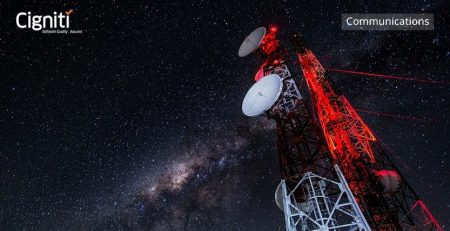5G: The Good, The Bad, And The Ugly Future of Telecom IoT
It has been only a few years since 4G took over 3G as the preferred internet service and we are already preparing for coronation of 5G as the internet king. With the expected capability to complete a download of up to 20GBs within a matter of seconds, 5G dwarfs all of 4G’s specs.
Even if Trump is preparing to ban Huawei in the U.S. citing security reasons, the telecommunications equipment and consumer electronics manufacturer is leading the race of 5G roll out. With more than 11,000 technical contributions, Huawei outranks the likes of Ericsson, Nokia, Qualcomm, and Intel. Despite the cease of operations under Trump governance, it is still gaining business and winning contracts from rest of the world.
With negligible latency, the 5G spectrum is almost here and opening doors to richer applications backed by smoother, faster internet. This next generation service will enable mobile network providers to deliver higher capacity for increasing demands at lower costs. As we are envisioning a future dominated with AI-led software, AR-enabled businesses, and self-driving cars, 5G is becoming the backbone to a high-end technology ecosystem. Extensive modifications are required at the core infrastructural level for realizing the 5G tomorrow.
The Good
We are all familiar with the times when downloading a 1GB file used to take several hours. That was the 2G era. Introduction of 3G and then 4G has sped up these processes, cutting down the average time required from hours to minutes. The blazing speed of 5G and almost instantaneous response time with practically non-existent latency are expected to further decrease the duration to only a couple seconds. This improved spectrum is broadening the scope of innovating highly sophisticated tools and applications. The reduced power consumption, response time, and enhanced capacity and speed are the factors that have made 5G as the most desirable fruit for businesses and consumers alike.
The higher bandwidth with the wireless technology will end the tussle between multiple users for internet speed. 5G will make buffering a thing of the past, thus, enabling uninterrupted video streaming, web browsing, and downloading activities.
The Bad
The fifth-generation wireless technology is incompatible with the existing devices and requires installation of an upgraded infrastructure for functioning. None of the current smart devices prevalent in the market and in general use are capable of delivering 5G services. A couple months back, AT&T announced the launch of its 5G Evolution series and rebranded some existing models to display 5GE cellular network. This was a misleading attempt in making the customers believe that they can avail the futuristic network services, which ultimately backfired resulting in an expensive lawsuit, lost credibility, and negative publicity.
The 5G-enabled smart devices will need specially designed chips to be embedded in their internal system. Due to this, the 5G devices are expected to cost a fortune. In addition to the smart devices, 5G deployment also demands setting up a whole new set of equipment match the desired bandwidth and frequency range. Rolling out 5G is on the agenda of all the major players in the telecom industry. Verizon has already launched 5G network in parts of Chicago and Minneapolis and is expected to release the service in 20 more cities by the end of this year.
The Ugly
Health and security are the major areas to which 5G is losing.
Last month, Brussels put a stop to its 5G plans as the technology is not in compliance with Belgian radiation safety standards. A Belgian minister, Céline Fremault, was quoted as saying, “I cannot welcome such technology if the radiation standards, which must protect the citizen, are not respected, 5G or not. The people of Brussels are not guinea pigs whose health I can sell at a profit. We cannot leave anything to doubt.”
In addition to the dangerous levels of electromagnetic radiations that 5G implementation will exude, there is a widespread concern regarding security and privacy. With 5G, random computer algorithms will have the ability to deeply penetrate the private lives of users, thus, paving way for cybercrimes. Lindsey Graham, the Senate Judiciary Committee Chairman, declared a warning for the possible 5G security threats during a recent hearing. As per Ana Tavares Lattibeaudiere of GSMA, “For consumers, it may seem like a choice between sharing their data and hoping for the best, or keeping it private and secure but missing out on the connected experiences. The telecommunications industry and service providers should not only think about network and infrastructure security – which are highly important – but also how 5G can bring in an era of user choice.”
5G for Telecom IoT Solutions
5G is setting the stage for a connected future where each element that we interact with will be controlled by data and IoT technology. With higher resolution, the fifth-generation technology turns the possibility of remote education delivery, healthcare delivery, accurate weather forecasting, and natural disaster prediction into reality. For the roads to be dominated with self-driving cars, for the homes to be dominated with AI, for the lives to be dominated with wearable devices, for the everyday interactions to be supported by AR, there is an imminent need for supersonic internet that will guarantee unobstructed connectivity of the millions of IoT devices. The hyper-connected IoT in telecom will empower the update from smart devices to smart homes.
In such a scenario, where everything will require flawless interaction, what will assure the desired performance? An IoT testing framework. Testing IoT applications in telecom should be on priority for the major industry players before making the shift to 5G. A telecom IoT strategy will ensure that the countless tiny cells facilitating the data transmission over 5G work seamlessly with each other. If we are stepping towards a 5G-driven future, we must also consider the impact that a minutely dysfunctional unit in the entire network may have in the proper functioning of the linked devices.
Cigniti’s experience in IoT app Testing as a Service (TaaS), a team of IoT-skilled testers, and a robust IoT testing infrastructure (– labs, simulators, test racks etc.,) support real-time testing of Big Data, Compatibility, IoT Security, Performance, Pilot, Regulatory, Reliability, Upgrade, Usability, and smart devices in a dynamic environment (RFID, Sensors).
Cigniti has a team of professionals experienced in using multiple IoT Network Protocols such as Bluetooth, Zigbee, Z-Wave, 6LoWPAN, Thread, Wi-Fi, Cellular, NFC, SIGFOX, Neul, LoRaWAN, and more. Organizations utilize our skills to overcome their IoT testing challenges and move ahead successfully in their digital transformation journey.





Leave a Reply